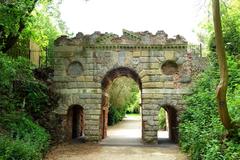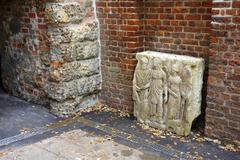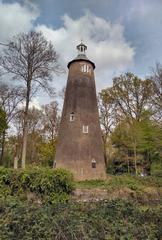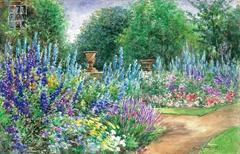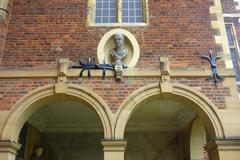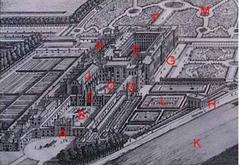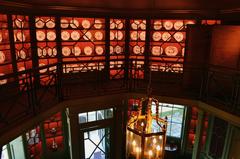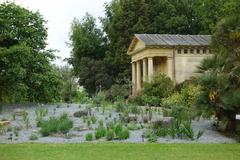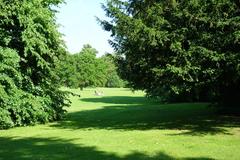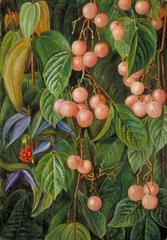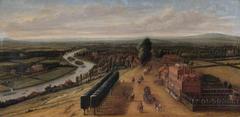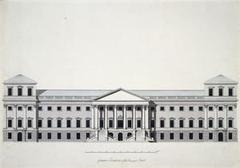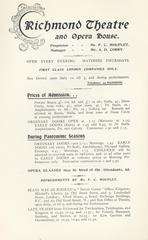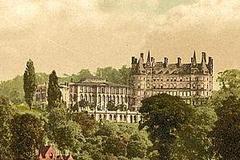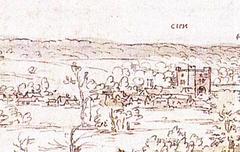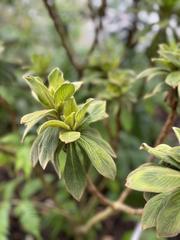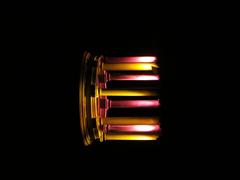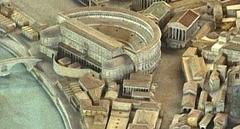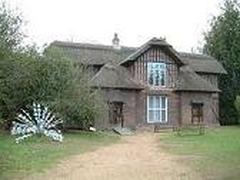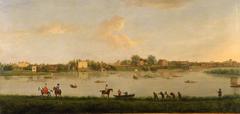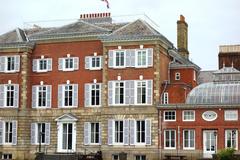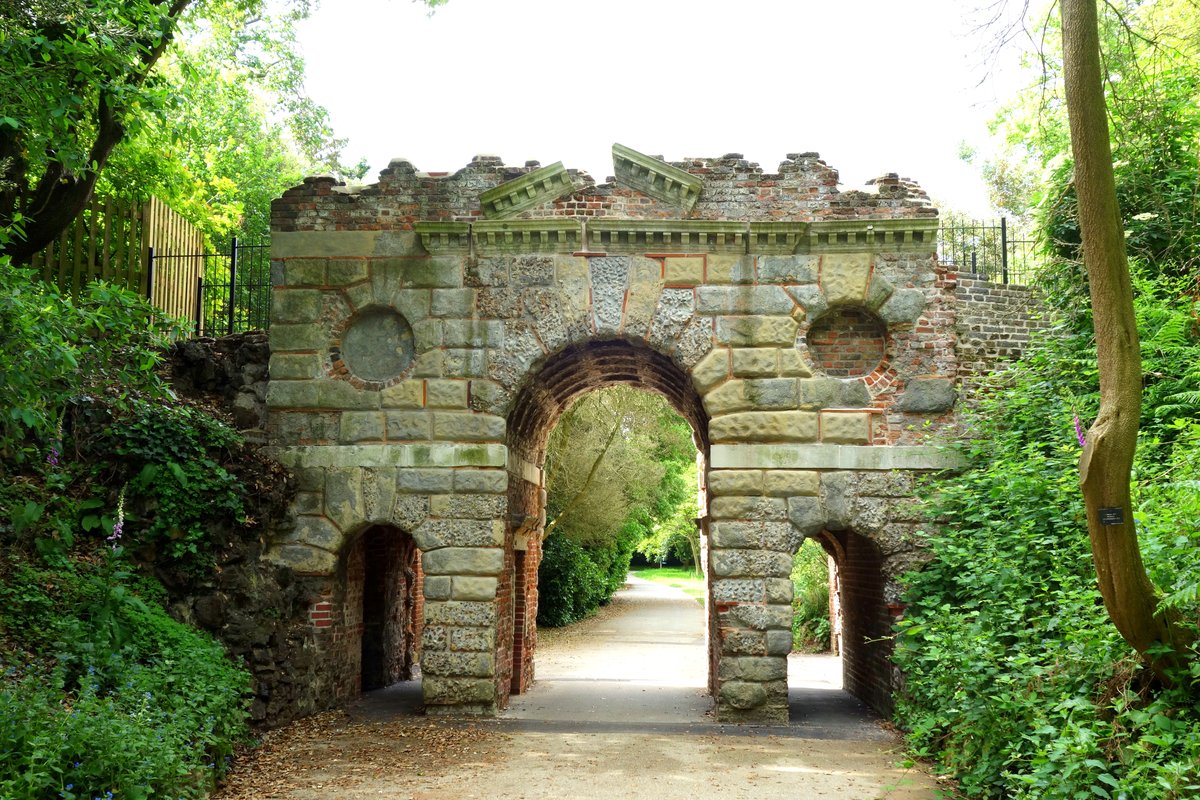
Ruined Arch, Including Fragments Of Masonry At The Base Of The Arch
Ruined Arch Richmond: Visiting Hours, Tickets, History, and Travel Guide
Date: 14/06/2025
Introduction
Richmond, United Kingdom, is celebrated for its rich tapestry of history and stunning landscapes. Among its treasures is the Ruined Arch, a striking 18th-century architectural folly nestled within the Royal Botanic Gardens, Kew. Designed by Sir William Chambers, the Ruined Arch invites visitors to step into the world of Georgian garden design, the romantic movement, and the English fascination with antiquity. This guide provides a comprehensive overview of the Ruined Arch, including its history, architectural significance, visitor information (such as opening hours, ticketing, and accessibility), travel tips, and highlights of nearby attractions. Whether you are a history enthusiast, architecture lover, or simply in search of a tranquil experience, the Ruined Arch offers a unique journey into England’s artistic and cultural heritage (Kew Gardens Folly Trail; A Lady in London).
Table of Contents
- Introduction
- Historical Background and Significance
- Architectural Features
- Visiting Information
- Nearby Attractions
- Visitor Experience & Practical Tips
- Conservation Efforts
- Frequently Asked Questions (FAQ)
- Digital Resources & Future Trends
- Conclusion & Recommendations
- References
Historical Background and Significance
Origins and Early History
The Ruined Arch was commissioned in the late 1750s by Princess Augusta, founder of Kew Gardens, and realized by Sir William Chambers between 1759 and 1760. Chambers, renowned for his classical influences and mastery of the picturesque, designed the arch to mimic a fragment of a grand Roman ruin, reflecting Enlightenment-era interests in antiquity and the passage of time (Kew Gardens Folly Trail; Historic England).
Follies like the Ruined Arch were fashionable in 18th-century English gardens. These purpose-built ruins evoked romantic ideals and served as visual focal points, helping shape the narrative and atmosphere of the landscape.
Cultural Importance
The Ruined Arch is emblematic of Georgian landscape artistry and the English Landscape Movement. Its deliberate decay and scattered masonry fragments evoke themes of impermanence, beauty, and reflection, aligning with the era’s fascination with the picturesque and sublime (A Lady in London). The arch is also part of a broader tradition that includes nearby sites such as Ham House and Richmond Park, connecting the visitor to centuries of aristocratic taste and landscape design.
Architectural Features
- Design: The Ruined Arch features a central brick archway, flanked by smaller arches, and is constructed using locally sourced materials. The use of stucco and specific masonry techniques, such as catenary curves for stability, lends the arch its authentic, ruined appearance (DBR Limited).
- Decoration: Mimicking ancient Roman ruins, decorative elements include oculi (circular openings), a broken cornice, and a band course. Masonry fragments at the base further enhance the illusion of historical decay.
- Setting: Strategically sited to frame garden vistas, the arch serves as both a gateway and a destination within Kew Gardens, harmonizing with the surrounding landscape (Scipedia).
Visiting Information
Opening Hours & Tickets
- Opening Hours: Kew Gardens, and thus the Ruined Arch, are open daily. Typical hours are 10:00 am to 6:00 pm (last entry at 5:00 pm), but these may vary seasonally. Always check the Kew Gardens official website for current details.
- Tickets: Admission to Kew Gardens is required.
- Adults: £19.50
- Seniors (60+): £17.50
- Children (4-15): £5.00
- Under 4: Free
- Purchase tickets online or at the entrance; no separate ticket is needed for the Ruined Arch.
Accessibility
- Paved and gravel paths lead to the Ruined Arch, making it accessible for most visitors, including wheelchair users.
- Assistance dogs are welcome and accessible toilets are available nearby (Kew Gardens Visitor Information; Historic England).
- Some uneven terrain and steps may challenge those with limited mobility; check with Kew Gardens for detailed accessibility info.
Travel Tips
- By Public Transport: The closest entrance is Lion Gate. Kew Gardens tube station is a 15-minute walk; Richmond Station (National Rail and Overground) and several bus routes (65, 391) serve the area (Strawberry Tours).
- By Car: Limited parking is available at Kew Gardens for a fee; public transport is recommended.
- Best Time to Visit: Early mornings and late afternoons offer optimal lighting for photography and a quieter setting.
- Picnicking: Permitted in designated areas. Please respect the gardens and dispose of litter responsibly.
Guided Tours & Events
- Join guided tours or follow the self-guided Kew Gardens Folly Trail for deeper insights into the Ruined Arch and other follies.
- Seasonal events and heritage workshops are offered throughout the year; check the website for schedules.
Nearby Attractions
Make the most of your visit by exploring:
- Kew Palace: A historic royal residence within the gardens.
- The Great Pagoda: Another Chambers masterpiece.
- Japanese Gateway and Temperate House: Highlights of Kew’s botanical collections.
- Richmond Riverside & Thames Path: Scenic walks and riverside pubs.
- Ham House: A 17th-century stately home with original interiors and gardens (A Lady in London).
Visitor Experience & Practical Tips
- Interpretive Signage: On-site panels provide historical and architectural context.
- Photography: Permitted and encouraged; tripods should not obstruct pathways, and drones are prohibited.
- Visitor Flow: Weekends and public holidays are busiest; visit on weekday mornings for a peaceful experience.
- Safety: Remain on designated paths; do not climb or remove masonry.
Conservation Efforts
The Ruined Arch is maintained through regular structural assessments and restoration, utilizing advanced techniques such as laser scanning and traditional lime-based mortars (DBR Limited). Conservation prioritizes both authenticity and safety, ensuring the arch’s preservation for future generations (Scipedia).
Frequently Asked Questions (FAQ)
Q: What are the Ruined Arch visiting hours?
A: The arch is accessible during Kew Gardens’ opening hours, typically from 10:00 am to 6:00 pm. Check the official site for seasonal changes.
Q: Do I need a ticket to visit the Ruined Arch?
A: Yes, entry to Kew Gardens is ticketed, which includes access to the Ruined Arch.
Q: Is the Ruined Arch wheelchair accessible?
A: Most paths are accessible, but some uneven ground may present challenges. Contact Kew Gardens for detailed accessibility support.
Q: Can I take photographs?
A: Yes, but please avoid obstructing paths and do not use drones.
Q: Are guided tours available?
A: Guided and self-guided tours, as well as educational workshops, are offered; check the Kew Gardens website for current options.
Digital Resources & Future Trends
- Interactive Maps and Digital Guides: Available through the Kew Gardens website.
- 3D Models and Virtual Tours: Accessible on the Wikimedia Commons page.
- Emerging Technologies: Augmented reality apps, QR codes, and audio guides are being adopted across UK heritage sites and are expected to enhance the visitor experience in the near future (ATS Heritage).
Conclusion & Recommendations
The Ruined Arch in Richmond stands as a remarkable testament to 18th-century landscape design, romantic aesthetics, and English garden artistry. Its evocative blend of history, architecture, and nature makes it a highlight of Kew Gardens and a must-see for visitors to Richmond. To get the most from your visit, check for up-to-date details on opening hours, ticketing, and accessibility via the Kew Gardens official website, and consider using digital resources or guided tours for a richer experience.
Support conservation efforts by respecting the site, using public transport, and participating in community initiatives. Download the Audiala app for audio guides and detailed maps, and follow local heritage organizations for the latest updates and events.
Embark on your journey to discover the stories and timeless beauty of the Ruined Arch—an enduring link to England’s artistic heritage and a captivating destination in Richmond’s historic landscape (A Lady in London; DBR Limited).
References
- A Lady in London: Visiting the Ruined Arch in Richmond
- Kew Gardens Official Website
- DBR Limited: Ruined Arch Conservation
- Martin Ashley Architects: Ruined Arch
- Scipedia: Structural Analysis and Conservation of the Ruined Arch
- Historic England – Easy Access Guidance
- Richmond upon Thames Tourism Official Site
- ATS Heritage: 2025 Trends in Visitor Attractions
- Wikimedia Commons: Kew Gardens Ruined Arch
- Strawberry Tours: Kew Gardens
- Art Distance: Kew Gardens Guide
- Acoupledaystravel: Day Trip to Kew Gardens
- Wikipedia: Tourism in the United Kingdom
